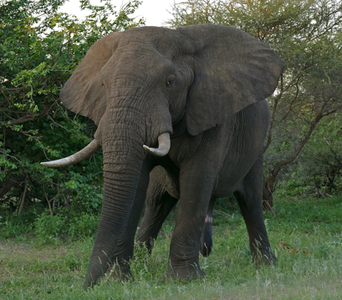Together with a team from Africa Network for Animal Welfare (ANAW), I set out for a field trip that would inform our activities for the year 2020. My love for animals in their natural environs had me eagerly looking forward to seeing the big five on this expedition. Our drive from Nairobi down the smooth Mombasa highway was mostly uneventful as we talked about everything from work, animals, roads to Kenyan politics. After about five hours, we arrived at the largest town in Taita-Taveta County, Voi. After a quick lunch, we were out again to meet the first community of a people known as the Watha. I wondered about these people who I later found out are also referred to in literature as the Waatha, Watta or Sanye. The Watha, I later learnt, are an indigenous Cushitic group that have lived in areas bordering wildlife protected areas. They can be seen running homesteads in the counties of Kwale, Kilifi and Tana River. They are also found in the rich bio-diversity forested hills of Kilibasi and in various coastal forests including the Arabuko Sokoke. I took time to find out more about them by scanning through various online literature and listened keenly as we met different communities who to me are a little-known people of Kenya. I had been ignorant and unfamiliar about an indigenous community existing within the Tsavo ecosystem! You see, all I knew about the Tsavo is that one went there to find wild animals particularly the elephant. You can only imagine my surprise when I heard the Watha being referred to as The Elephant People!
 Hearing about the Watha and their history, left me feeling rather lost in time as I wondered where we or they have been. It appears that we left them behind going on with life in the city oblivious of the plight of a people who have always been part of Kenya. Historically, these are a community of hunters and gatherers that lived off bush meat and traded in wildlife items such as rhino horns and elephant tusks. Their knowledge of the bush and game hunting which was once profitable, in the days of hunting safaris, now leads to their arrest and imprisonment. Their former lifestyle is no longer sustainable in the modern context and the area they once lived in and lived off was taken from them to create the current Tsavo East National Park.
Hearing about the Watha and their history, left me feeling rather lost in time as I wondered where we or they have been. It appears that we left them behind going on with life in the city oblivious of the plight of a people who have always been part of Kenya. Historically, these are a community of hunters and gatherers that lived off bush meat and traded in wildlife items such as rhino horns and elephant tusks. Their knowledge of the bush and game hunting which was once profitable, in the days of hunting safaris, now leads to their arrest and imprisonment. Their former lifestyle is no longer sustainable in the modern context and the area they once lived in and lived off was taken from them to create the current Tsavo East National Park.
My colleagues and I reasoned that while the government’s need for conservation was met, the Watha community were left without an alternative means of livelihood. Their traditional dependence on honey and bush meat has been challenged in post-colonial Kenya resulting in a community that is currently characterized by youth unemployment and poverty.
Education may be the solution to some of these challenges but this story does not end with Watha children going to school because we still need to know and share about whether Watha children go to school and how.
Africa Conservation Education Fund (ACEF) is a program of Africa Network of Animal Welfare (ANAW) that was established to raise funds for the education of children from communities in wildlife areas.
Read more here https://www.anaw.org/index.php/africa-conservation-education-fund
Or for more information write to This email address is being protected from spambots. You need JavaScript enabled to view it..
